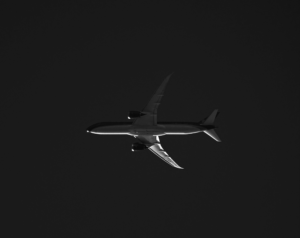This chapter introduces its readers to the concept of tourism. It sheds light on the
rationale for tourism, as it explains the tourists’ inherent motivations to travel. It
also describes different aspects that together make up the tourism industry.
Tourists travel to destinations that are accessible to them. They require
accommodation if they are visiting a place for more than twenty-four hours.
Leisure and business travel may also the visit attractions and engage in
recreational activities. Hence, the tourist destinations should have the right
amenities and facilities. In this light, this chapter clarifies how destinations may
offer different products to the satisfy a wide array of tourists. Tourism products can
include; urban (or city) tourism, seaside tourism, rural tourism, ecotourism, wine
tourism, culinary tourism, health tourism, medical tourism, religious tourism,
cultural (or heritage) tourism, sports tourism, educational tourism, business
tourism (including meetings, incentives, conferences and events), among others.
In conclusion, this chapter lists major points of interest in North America to
clarify how diverse destinations may be appealing to different tourists, for many a
reasons.

Defining Tourism
Individuals become tourists when they voluntarily leave their normal surroundings, where they
reside, to visit another environment. These individuals will usually engage in different
activities, regardless of how close or how far this environment (destination) is (Hall, 2008;
Holloway & Taylor, 2006; Jafari, 2002). Therefore, tourists are visitors, and what they you do
whilst visiting another place may be considered as tourism. Back in 1963, the United Nations
Conference on International Travel and Tourism agreed to use the term ‘visitors’ (other than
residents) to describe individuals visiting another country. This definition are covered two classes
of visitor: Tourists were classified as temporary visitors staying at least 24 hours in a
destination. If they are travelling for recreation, health, sport, holiday, study or religious
purposes, their visit could be categorised as leisure. Alternatively, excursionists, including
cruise travel may be considered as temporary visitors, if they stay in a destination for less
than 24 hours. However, these definitions fail to take into account the domestic tourists. In
1976, the Institute of Tourism (which later became the Tourism Society) suggested that tourism
is the temporary short-term movement of people to destinations outside the places where they
normally live and work. Therefore, tourism includes the movement of people for all purposes,
including day visits or excursions (Cooper, 2008; Holloway & Taylor, 2006).

This broader definition was slightly reformulated at the International Conference on Leisure
Recreation Tourism that was organised by the Worldwide Network of Tourism Experts
(AIEST) and the Tourism Society in Cardiff, in 1981: “Tourism may be defined in terms of
particular activities, selected by choice, and undertaken outside the home environment.
Tourism may or may not involve overnight stay away from home”. In 1991, the United Nations
World Tourism Organisation declared that “Tourism comprises the activities of persons
travelling to and staying in places outside of their usual environment for not more than one
consecutive year for leisure, business or other purposes”. At this stage, one could differentiate
between domestic and international tourism (Yuksel, 2004). The former refers to travel that is
exclusively undertaken within the national boundaries of the traveller’s home country. The
latter refers to travel within the borders of one’s home country. Domestic travel will have an
impact on the balance of payments and will reduce the outflow of money from the tourists’
home country (Mathieson & Wall, 1982).

At this stage, it is important to realise that there are two types of travellers: There are those who travel for reasons of business. Others may travel for personal motives, including visits to friends and relatives (VFR travel); study; religious pilgrimages; sport; health, et cetera. For the first group, the decision to travel, and where to go, is largely beyond their control. The business travellers will have little discretion in the choice of their prospective destination, or on the timing of their trip. Generally, the purpose of their trip is not to enjoy the destinations’ attractions and facilities. Business travel is usually arranged at short notice and for specific and brief periods of time; the duration of their itinerary may often be as short as a day (Swarbrooke & Horner, 2001). In this case, there could be a substantial journey time involved. For these reasons, business travellers need the convenience of frequent, regular transportation facilities, efficient, reliable services and good accommodation facilities (in terms of accommodation and catering) of a high standard, at their destination (Jafari, 2002). Very often, business travellers will be less concerned about the cost of travel, as their employer could be paying for their travel arrangements (Gustafson, 2012). Higher prices will not deter them from travelling, nor will lower prices encourage them to travel more often. Therefore, there seems to be inelastic demand for business travel (Gillen, Morrison & Stewart, 2003; Brons, Pels, Nijkamp & Rietveld, 2002; Arnott, De Palma & Lindsey, 1993). On the other hand, leisure travel is highly elastic for those travellers who are price-sensitive. The lower prices for holidays to particular destinations will usually lead to an increase in the aggregate numbers of travellers (Hall,2008) Frugal tourists will usually shop around for affordable holidays (Xiang, 2013). Therefore, they may be prepared to delay their travel, or to book well in advance of their travel dates, if this would translate to a significant reduction in their travel costs (Russo, 2002).
